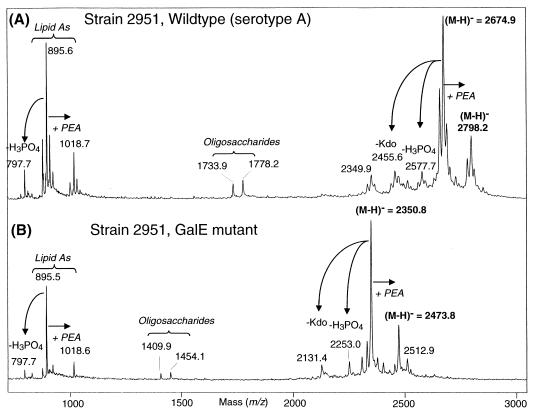FIG. 4.
Linear MALDI-time of flight spectra of the parental wild-type M. catarrhalis strain 2951 (A) and the isogenic galE mutant (B). The observed molecular ions for the individual LOS species appear as unresolved isotope clusters whose centroids correspond to the average mass. In addition to the peaks described in the text, peaks due to prompt ion fragmentations are also present due to β-elimination of phosphoric acid from the parent (M-H)− peaks (m/z 2,578.3, m/z 2,253.4) and lipid A fragments (m/z 797.7) and loss of a Kdo (m/z 2,456.3, m/z 2,131.8), as are peaks resulting from facile loss of CO2 from a Kdo residue of the oligosaccharides (m/z 1,734.2 and 1410.1). Fragmentations of these types have been discussed in detail elsewhere (19). Masses shown in Fig. 5 are the theoretically predicted masses based on the structures shown. The experimental masses listed in the two spectra above may differ but are within the expected experimental mass accuracy (± 0.1%).

